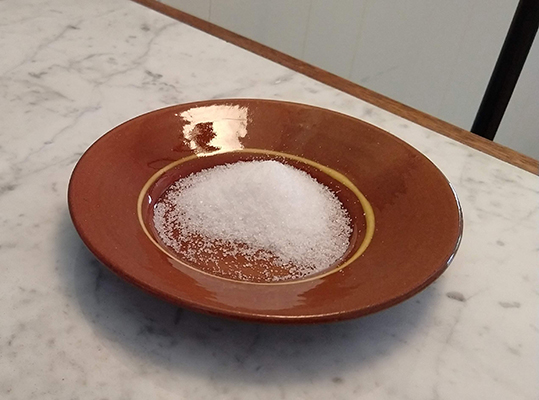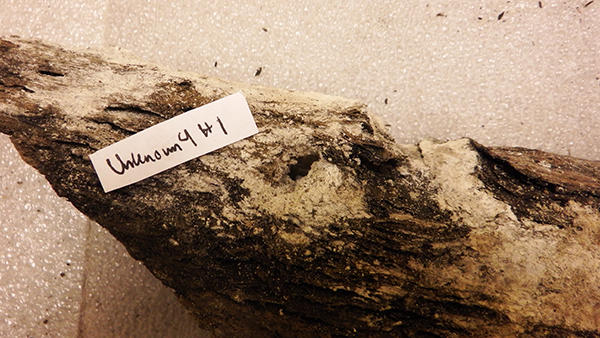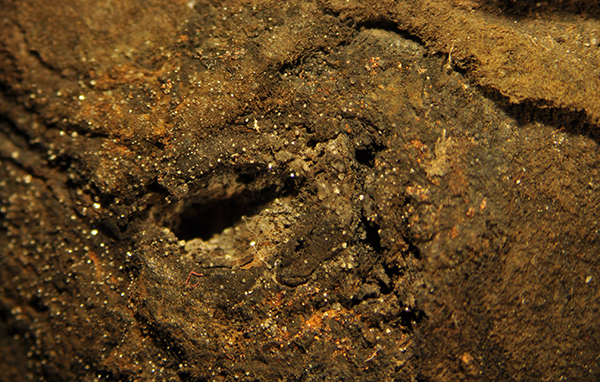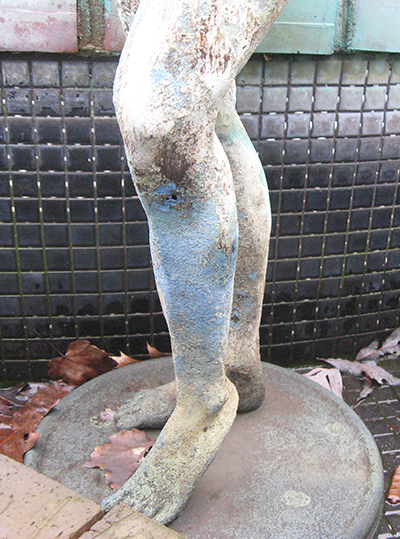“So… why are you guys so salty about, well, salt?”
If you’ve been following along with the blog posts about conserving USS Monitor, you may have noticed a common theme: salt. Salt is bad for this, we’re removing the salts from (or desalinating) that… but why? I’ve been sprinkling that stuff on my lunch; how bad can it really be?

Image by author.
Well, if you’re a shipwreck (…we’ve all had those days), it can be pretty bad!
For the most part, we are actually talking about the same salt that you eat. Seawater is about 3.5% dissolved salts, and ordinary table salt (well, sea salt, but you know what I mean) makes up the majority. Other salt-forming ions – sulfates, magnesium, iron, zinc, calcium, and more – are present in seawater, but it is regular old salt – sodium chloride – which makes up the majority. Sodium chloride is also the most problematic salt, although others cause their fair share as well (…nobody likes sulfur. Nobody.)
Salts act in different ways on different materials. In people, both components of table salt (sodium and chloride) are necessary nutrients which help regulate blood pressure. Too much is bad for you, too little is bad for you, but there’s a nice, healthy middle ground of just the right amount. Goldilocks would be proud.
Archaeological objects are different though; there’s no beneficial purpose for which the objects need salt to accomplish. It wasn’t intended to be in the material, or intentionally put there, it’s just kind of gotten in anyway… one of the hazards of spending too much time in the ocean; you’d be pretty salty too after 140 years!
When salt gets into things it’s not meant to get into, it almost always causes problems, but the nature of the problem varies by material. The effects can be very specific, but I’m just going to generally go over the three broad types of materials: organics (like wood, leather and cloth), metals (like iron and copper), and other inorganic materials (like ceramics, glass and stone).
In organic materials, different salts will cause different types of damage, some of it from chemical attacks, and some physical.
Most salts are a problem underwater because, when dissolved in water they affect the pH. Water has a pH of about 7, while acids are lower in pH and bases are higher. Some organic materials (wood, for example) will tolerate water that’s gone a little acidic or a little basic. Some (like bone or shell) prefer a slightly basic pH. So if the salts in the water change the pH too far, the object will disintegrate faster.
That will continue to be a problem even after the object is removed from the ocean. If you dry a piece of wood from the ocean, the water will just evaporate. The salt? Yup, stays right where it started. The biggest one of these problems for organics from shipwrecks is actually sulfur salts. When dried, these will combine with oxygen in the air to form sulfates, which attracts water, which forms sulfuric acid… and there are no organic materials which really like sulfuric acid all that much.

Image courtesy of The Mariners’ Museum and Park.
If enough salts are present, it can also cause damage from purely physical means. Organic materials are often porous, so there are natural ‘gaps’ in the structure which fill with sea water. As the object begins to dry and water is lost, the remaining seawater inside becomes more and more concentrated until eventually there’s too much salt for the water to hold. Salt crystals start to form as a result. And while salty water isn’t exactly good, it’s at least physically unobtrusive. Solid crystals of salt are spikey, hard, and grow where they want to grow… and if that happens to be a centimeter under the surface of a piece of wood, well, you’re going to start seeing cracks. And fuzzy white powder all over the surface. And more cracks. And… wait a minute, didn’t this object used to be bigger?

Image by author.
Inorganic materials like pottery, glass and stone have kind of similar problems to organics. In water, they can be attacked depending on the pH. Well-made materials are usually fairly stable in water unless there’s enough salt to REALLY change the pH, and even sea water isn’t that bad. Usually. Some types of glass lose stabilizing chemicals from their structure a bit easier than others, but by the time Monitor was built, glass composition was pretty good. Spending 140 years in the ocean is still going to do a bit of damage, but our glass still looks like glass when it comes up, so… win?
With these sorts of materials, physical damage is often more of a worry than chemical damage. As with organics, things like pottery and stone are porous, and glass – even with very minimal chemical damage – can start to delaminate, introducing microscopic gaps into the material. If you leave everything all salty and just dry it out, the water evaporates and – once again – salts start to recrystallize in the gaps within the object.
Throwing a rock through a glass window will pretty reliably break the window. Little tiny ‘rocks’ of salt appearing inside of a piece of glass aren’t that much better. Your glass starts to go opaque, and then cracks, fuzzy white powder, cracks… yeah, this definitely used to be bigger.

Image courtesy of The Mariners’ Museum and Park.
With metals, the problem is mainly chemical, and chloride specifically is a HUGE issue. If you throw oxygen and water (conveniently available in one package, now in the air you breath!) at most metals, they will corrode. Iron rusts, and forms reddish-brown iron oxides. Copper will go red or black, or if there’s carbon around (also conveniently available in air!) it can go green and blue colors. The compounds are different, but the basic process is the same: a metal atom loses an electron, the electron wanders off to go reduce an oxygen molecule, and then the metal and the oxygen bond over their experience. This happens to most metals, with or without salt, as long as oxygen and water are present.
The presence of salt – and specifically chloride – changes things. First, in order for that electron to wander off, it must be in a conductive medium. Salt water is a way, way better conductor than plain water. And the saltier it is, the higher the conductivity, and the easier it is for those electrons to travel around.
Second, chloride acts as a catalyst for the corrosion of a number of metals, notably copper and iron. A catalyst is a chemical which makes a reaction happen faster, but isn’t actually used up in the reaction. As an example, iron, chloride, and oxygen react to form iron chloride and water. Iron chloride, water, and a bit more oxygen react a second time to form iron oxy-hydroxide (rust) plus the exact same amount of chloride that you started out with. So, as normal when you add water and oxygen to metal, you get rust. But with chloride in the mix, you get a lot more of it a lot quicker.
That catalyzed reaction is devastating to metals, even while still in sea water. Iron in particular can dissolve away into nothing in some environments, and on Monitor much of the cast iron has corroded until only the carbon remains from the original alloy. By storing and treating metals in chemical solutions we can hit ‘pause’ on this process, but as long as chloride is present, the object is at risk. Drying out an iron object without removing the salts will cause it to start cracking, the surface will peel off, fuzzy orange powder (Hey! New color this time!), cracks, orange powder… didn’t I leave a cannon here? There definitely used to be a cannon here.

Image by author.

Image courtesy of The Mariners’ Museum and Park.
Because of this, our number one priority on almost every object from a shipwreck will be removing salts. It’s rarely the only problem we need to solve to stabilize and treat a material, but it’s often the most significant and time consuming one. After 140 years of ocean exposure it takes years (or even decades for the largest objects) to remove enough salt to stabilize an object, without the removal process itself causing damage. Our end goal is always to make an object stable enough that it can be viewed – dry – in a museum environment, and the first step is always ‘get rid of the salts!’
References:
https://oceanservice.noaa.gov/facts/whysalty.html
Cronyn, J.M. The Elements of Archaeological Conservation. London: Routledge, 1990.
Pearson, C. Conservation of Mariner Archaeological Objects. London: Butterworth & Co, 1987